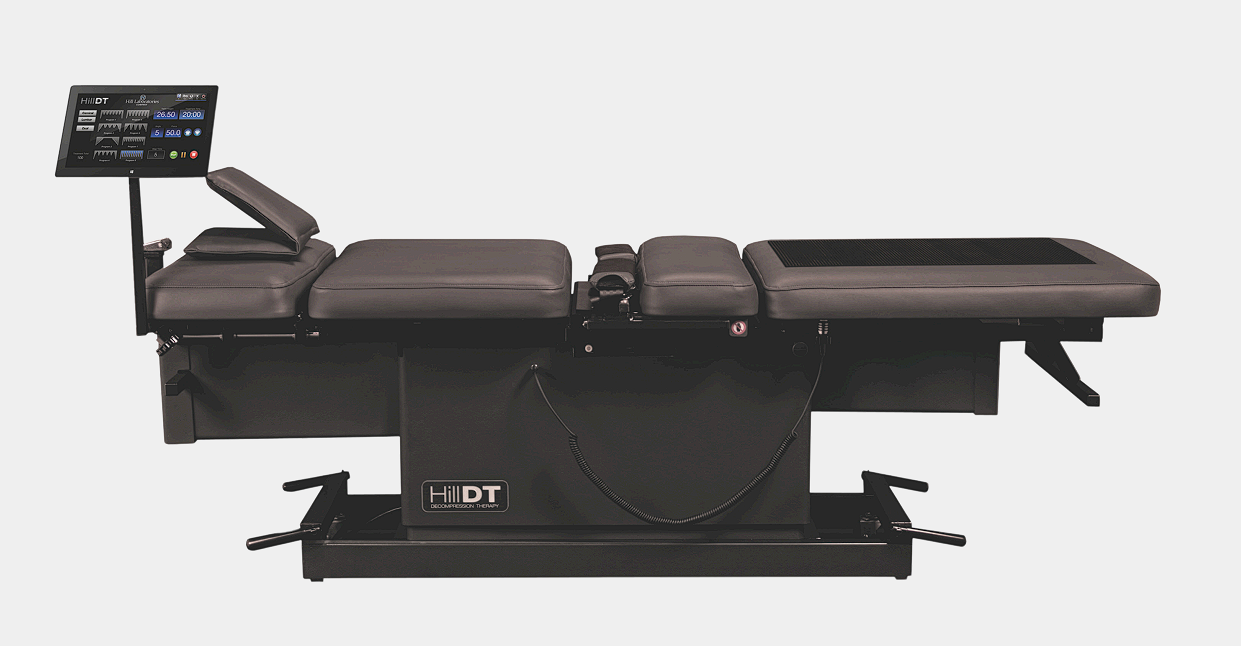Non-Surgical Decompression Therapy
Decompression therapy is a non-surgical treatment that uses traction to relieve pressure on the spine and spinal nerves. It can help with pain in the neck, back, or legs. If you have lasting back pain and other related symptoms, you know how disruptive to your life it can be. You may be unable to think of little else except finding relief. Some people turn to spinal decompression therapy(Disc Cure). Here’s what you need to know to help decide whether it might be right for you.
The Why of The Decompression
The advances in the decompression
- Traditional management based on rest and passive
care has been unsuccessful, actually promoting disability - Decompression alleviates conditions of low back pain
and associated radiculopathy - Technology has proven that discs and nerves can be
effectively decompressed non-surgical
Non-surgical Axial Spinal Decompression Defined
Decompression Therapy is a comprehensive program, it is not a table!
- Decreases intradiscal pressure.
- Promotes the regression of disc bulges.
- Relieves nerve compression.
- Increases nutrition to the disc.
The How of the decompression
The 5 components of the treatment program are:
– Pre-decompression treatment or therapy
– Decompression treatment with specific protocols
– Nutritional recommendations and support
– Postural rehab with both active and passive therapies

Biomechanics of DecoBiomechanics of Decompressionmpression.
- Vertebral separation, which decreases intradiscal pressure and reduce bulging of nuclear material, and may enhance osmosis from vertebral endplates, increasing nutrient supply to the discs.
- Separation and gliding of the facet joints, establishing potential for improved alignment and joint mobility. Tensing, or stretching of spinal ligaments.
- Widening of the vertebral foramina, allowing increased space for spinal nerve roots.
- Stretching of the spinal musculature, decreasing its sensitivity to stretch and thereby decreasing muscle spasming or guarding.

The proof is in the pictures. Here are 3 x-rays of a lumbar spine going through the treatment process at different intervals of care. Note the significant improvement in disc spacing between the pre-treatment film and the post treatment film. Yes it does work.

Here is a sample MRI of pre-treatment and post-treatment on a decompression patient. There is a clearly visible regression of the disc herniation in just 6 weeks of treatment! Results will vary, but this is not an uncommon outcome.
Are you a good candidate?
The best candidates are patients who have any of the following conditions:
• Herniated/bulging discs
• Degenerative discs
• Facet syndrome
• Failed spinal surgery
• Chronic pain that fails to improve with at least 2 nonoperative conservative treatment measures.
Case Studies

Lumbar decompression results, disc rehydration.

Cervical decompression results. Reversal of the cervical lordosis to a normal lordosis or curve, all subjective complaints resolved.

Lumbar retrolisthesis, patient had a full recovery

Treatment of a Spondylolisthesis which improved with decompression and the patient’s subjective complaints resolved.









Comments are closed